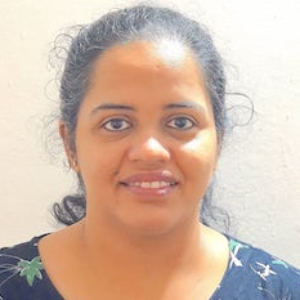Title : Stroke after pediatric traumatic brain injury and its association with outcome at hospital discharge: A retrospective chart review
Abstract:
Introduction: Childhood stroke is associated with high mortality and serious morbidity for the survivors. Traumatic brain injury (TBI) has been reported to be a possible cause of childhood stroke or post traumatic cerebral infarction (PTCI). The precise frequency of cerebral ischemia, however, is often debated in adult TBI, and even less is known about its frequency in pediatric TBI. It is generally believed that post-traumatic cerebral ischemia is an important contributing factor to secondary injury and, consequently, to poor outcome. We hypothesize that cerebral infarction following traumatic brain injury is one such risk factor and associated with poor outcome. Primary objective of this study will be to calculate the incidence of post traumatic cerebral infarction in children. Secondary objectives will be to find out the association between post traumatic cerebral infraction and outcome at hospital discharge.
Methods: This is a retrospective chart review (January 2016 to August 2021). All pediatric patients <18 years with isolated traumatic brain injury (TBI) admitted to a tertiary care hospital are included. Data collection included, demographic data, clinical details like diagnosis at admission and outcome at discharge. Diagnosis at admission is categorised as isolated skull fracture, isolated extradural hematoma (EDH), subdural hematoma, cerebral contusion and diffuse axonal injury (DAI). Outcome at discharge is determined as per King’s Outcome Score for Childhood Head Injury (KOSCHI) (Appendix 1). Diagnosis of PTCI was made by a neuro-radiologist on non-enhanced CT scan based on a well-demarcated or fairly discernible region of hypo-density following specific vascular territory.
Results: Four hundred and fourteen patient charts meeting the inclusion and exclusion criteria were reviewed. Eight charts were excluded from analysis for missing data. Average age of patients is 10.4+/-5.1 years. Male to female ratio is 300/106. Incidence of post traumatic cerebral infarction in pediatric patients was 8.84%. PTCI in patients was associated with poor outcome as determined by chi square test ( p<0.00001). Odds of having a poor outcome (KOSHI <3) in patients with PTCI is 45.5 (95% CI 12.9 to 160.4, p<0.0001). (narrow CI indicates precise estimate). Two forty eight patients had data on the type of head injury at the time of admission. Of these 64 patients had complicated head injury such as subdural hematoma and or contusion and or diffuse axonal injury. Whereas 184 patients had simple injury like skull fracture and or extradural hematoma. Complicated head injury in pediatric patients is associated with poor outcome (p<0.00001) and development of PTCI (p=0.0006) as determined by chi square test. Odds of having a poor outcome (KOSCHI <3) in patients with serious head injury is 5.6 (95% CI=2.93 to 10.7, P<0.0001). Odds of having PTCI in patients with serious head injury is 3.2 (95% CI=1.59 to 6.44, P=0.001).
Discussion and Conclusion: PTCI in children is associated with poor outcome and incidence of PTCI is higher in pediatric patients who sustained SDH or cerebral contusion or DAI. Future prospective studies are required to determine the risk of PTCI in children with head injury.
Audience Take Away Notes:
- To know the incidence of post traumatic cerebral infarction in pediatric patients
- Clinicians may anticipate PTCI in pediatric patients
- Prospective study can be conducted
- To allocate resources appropriately as PTCI carries a poor prognosis in paediatric patients




